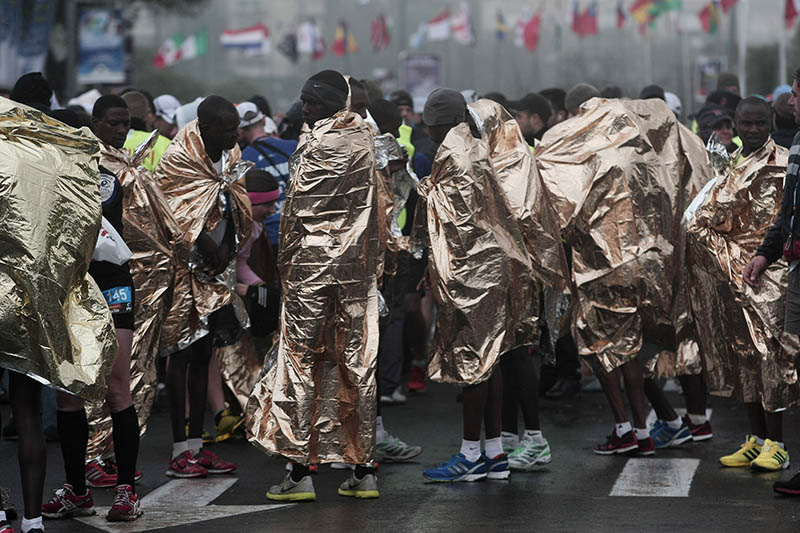Title image shows a Case IH Magnum Autonomous Tractor, with lidar on front, in field with a planter. Image Credit: CNH Industrial/Case IH
Much like Star Wars, X-Men, or any other successful franchise, the space sector is fond of a spin-off. And, as a research-intensive sector, the space sector is a great incubator of new technology.
Curiously, some of the most famous technology spinoffs from the space sector, aren’t. Although like most myths, there is normally a connection that’s got confused. Non-stick pans use Teflon, which has been used in various ways in space, but was invented in 1941 and so pre-dates space exploration.
Velcro has been used on space suits and on the straps of wristwatches, and even inside spacecraft as an easy way to stop thinks floating away. Although, over time the hooks can become brittle, break off, and get stuck in air filters, so we tend to not use Velcro on the International Space Station. But, Velcro is a Swiss invention from the 1940’s. It just took a NASA engineer to see the value in it.
You’ve maybe also heard of the space pen that NASA spent millions developing that can write in zero-gravity and even underwater. Meanwhile the Russian’s just used a pencil. Well, it’s a myth. Originally, both astronauts and cosmonauts used pencils. NASA even paid a small fortune for some mechanical pencils. But, the public scandal from the price paid, the fact that pencils aren’t a great solution anyway because the tips flack and break off, floating away and getting stuck in filters and other equipment, much like the hooks of Velcro. And finally, pencils, again like Velcro, are flammable. So, after the Apollo-1 fire this all pushed NASA to find a new solution.
The key part of the myth is that NASA didn’t actually pay for the development of the pen. The Fisher Pen Company did. And, after they patented it, they offered it for sale to NASA. Unlike most pens, it isn’t gravity fed. Instead it uses a pressurised ink cartridge to push the ink towards the tip, meaning it works independent of gravity and even upside down. The pressurised cartridge also means the ink can’t evaporate. And, the final part of this myth is that both US astronauts and Russian cosmonauts use the pen.
So, what has space ever done for me? Well, as the name suggests, Space Blankets were originally developed to be lightweight, strong, and to provide thermal insulation for spacecraft, but are perhaps better known today for use in first-aid and emergency survival kits, by Marathon runners after a race, and anywhere else requiring some thermal insulation.

Lidar technology, which uses a laser to measure the distance to a target, was first developed to help track spacecraft, and to help them autonomously rendezvous. In this way athree-dimensional model of the world can be produced. Today, Lidar is used in agriculture to archaeology, from crime scene forensics to, both producing video games and playing them, and even for self-driving cars.
Elsewhere, radar systems developed to study the planets have been used here on Earth to search for buried objects, and even to detect landmines. And, surplus rocket fuel has even been used to develop flares that can safely destroy the landmines once found.
We’ve also got quite a lot of spin-off technologies from human spaceflight, due to the challenges of trying to live in space. These include air-scrubbers that remove or neutralise bacteria, viruses, and moulds, and purification methods to turn even some of the most challenging wastewater into drinkable water, from sweat, to vapour in breath, and even urine.
Astronauts also provide a subject for experiments, and the knowhow gained from wearable sensors developed to study astronauts has been applied to baby-monitors that can alert to the risk of sudden infant death syndrome, or cot death.
Also, on re-entry to the Earth’s atmosphere spacecraft experience extreme heat, so to help deal with this material was developed that chars to form a protective coating that then helps stop the heat. This material has formed the basis of materials used throughout the world to make buildings more fire-resistant.
Finally, perhaps my favourite spin-off, is the use of technology developed to land a spacecraft, to the packaging of potato crisps to increase packing speed by over 30%. So, while we can’t ever predict the future, we can be sure that technologies being developed today to aid space exploration and exploitation will one-day find uses here on Earth that no-one would have expected.
Electronic & Electrical Engineering
Royal College Building
204 George St.
Glasgow G1 1XW